Connectivity Analysis of Cognitive Radio Ad-Hoc Networks with Multi-Pair Primary Networks
Abstract
:1. Introduction
- In contrast to previous works in the literature which analyzed the connectivity of secondary network without explicitly specifying the transmitting and receiving roles of PUs in communication process, we consider more practical CRAHN where primary network comprises of multiple spatial-temporal one-hop communication pairs of primary transmitter—primary receiver such as in licensed cellular networks, and then analyze the connectivity of secondary network from this perspective.
- We derive the mathematical models of the isolation probability of SU and the link probability of two adjacent SUs, taking into account the differences in transmission range and interference range of both PUs and SUs. The path connection between two arbitrary SUs is also studied.
- We show that network size and the number of PU pairs determine the minimum value of SU’s isolation probability and the maximum value of path connectivity between two arbitrary SUs. Moreover, the distance between two adjacent nodes insignificantly affects the link probability between them.
2. System Model
2.1. Spatial Node Distribution
2.2. Primary Network
2.3. Secondary Network
3. Connectivity Analysis
3.1. Probability of Isolated Secondary User
3.2. Link Connectivity between Two Adjacent Secondary Users
3.3. Path Probability between Two Arbitrary Secondary Users
4. Numerical Results
5. Conclusions
- For a given network size, the isolation probability of SU, , rapidly decreases as the number of SUs goes up to a certain value, then reaches a stable minimum value. However, noticeably increases without reaching a stable value as more number of PU-Tx-PU-Rx pairs in the network.
- The distance between two adjacent SUs does not noticeably influence the link probability of the connection between them. Instead, network size and the number of PU-Tx-PU-Rx pairs determine the maximum value of .
- In contrast to the isolation probability of SU, the path probability between two random SUs remarkably increases up to a maximum value as the number of SUs is higher. continuously decreases with the number of PU-Tx-PU-Rx pairs. It can be observed that the stable minimum value of SU’s isolation probability is inversely proportional to network size a while the stable maximum value of path probability is proportional to a.
Author Contributions
Funding
Conflicts of Interest
References
- Federal Communications Commission. Spectrum Policy Task Force, Technical Report. 2002. Available online: https://transition.fcc.gov/sptf/files/SEWGFinalReport_1.pdf (accessed on 19 January 2019).
- Mitola, J.; Maguire, G.Q. Cognitive radio: Making software radios more personal. IEEE Pers. Commun. 1999, 6, 13–18. [Google Scholar] [CrossRef]
- Akyildiz, I.F.; Lee, W.-Y.; Chowdhury, K.R. Crahns: Cognitive radio ad hoc networks. Ad Hoc Netw. 2009, 7, 810–836. [Google Scholar] [CrossRef]
- Bettstetter, C. On the connectivity of ad hoc networks. Comput. J. 2004, 47, 432–447. [Google Scholar] [CrossRef]
- Bettstetter, C.; Hartmann, C. Connectivity of wireless multihop networks in a shadow fading environment. Wirel. Netw. 2005, 11, 571–579. [Google Scholar] [CrossRef]
- Zhou, X.; Durrani, S.; Jones, H.M. Connectivity of ad hoc networks: Is fading good or bad? In Proceedings of the 2nd International Conference on Signal Processing and Communication Systems (ICSPCS 2008), Gold Coast, Australia, 15–17 December 2008; pp. 1–5. [Google Scholar]
- Bettstetter, C.; Hartmann, C.; Moser, C. How does randomized beamforming improve the connectivity of ad hoc networks? In Proceedings of the 2005 IEEE International Conference on Communications (ICC), Seoul, Korea, 16–20 May 2005; pp. 3380–3385. [Google Scholar]
- Zhou, X.; Durrani, S.; Jones, H.M. Connectivity of wireless ad hoc networks with random beamforming. IEEE Trans. Veh. Technol. 2009, 58, 5247–5257. [Google Scholar] [CrossRef]
- Georgious, O.; Nguyen, C. Multihop connectivity of ad hoc networks with randomly oriented directional antennas. IEEE Wirel. Commun. Lett. 2015, 4, 369–372. [Google Scholar] [CrossRef]
- Wang, Q.; Dai, H.-N.; Zhao, Q. Connectivity of wireless ad hoc networks: Impacts of antenna models. In Proceedings of the 2013 International Conference on Parallel and Distributed Computing, Applications and Technologies (PDCAT), Taipei, Taiwan, 16–18 December 2013; pp. 298–303. [Google Scholar]
- Cuomo, F.; Abbagnale, A.; Gregorini, A. Impact of primary users on the connectivity of a cognitive radio network. In Proceedings of the 9th IFIP Annual Mediterranean Ad Hoc Networking Workshop (Med-Hoc-Net), Juna-les-Pins, France, 23–25 June 2010; pp. 1–8. [Google Scholar]
- Ren, W.; Zhao, Q.; Swami, A. Connectivity of heterogeneous wireless networks. IEEE Trans. Inf. Theory 2011, 57, 4315–4332. [Google Scholar] [CrossRef]
- Haenggi, M.; Andrews, J.G.; Baccelli, F.; Dousse, O.; Franceschetti, M. Stochastic geometry and random graphs for the analysis and design wireless networks. IEEE J. Sel. Areas Commun. 2009, 27, 1029–1046. [Google Scholar] [CrossRef]
- Liu, J.; Zhang, Q.; Zhang, Y.; Wei, Z.; Ma, S. Connectivity of two nodes in cognitive radio ad hoc networks. In Proceedings of the 2013 IEEE Wireless Communications and Networking Conference (WCNC): Networks, Shanghai, China, 7–10 April 2013; pp. 1186–1191. [Google Scholar]
- Zhai, D.; Sheng, M.; Wang, X.; Zhang, Y. Local connectivity of cognitive radio ad hoc networks. In Proceedings of the 2014 IEEE Global Communication Conference (GLOBECOM), Austin, TX, USA, 8–12 December 2014; pp. 1078–1083. [Google Scholar]
- Dung, L.T.; An, B. Connectivity analysis of cognitive radio ad-hoc networks with shadowing. KSII Trans. Internet Inf. Syst. 2015, 9, 3335–3356. [Google Scholar]
- Wang, Y.; Wang, Q.; Dai, H.N.; Wang, H.; Zheng, Z.; Li, J. On Local Connectivity of Cognitive Radio Ad Hoc Networks with Directional Antennas. In Proceedings of the 2016 IEEE Internal Conference on Communication System (ICCS), Shenzhen, China, 14–16 December 2016; pp. 1–6. [Google Scholar]
- Dung, L.T.; An, B. A modeling framework for supporting and evaluating connectivity in cognitive radio ad-hoc networks with beamforming. Wirel. Netw. 2017, 23, 1743–1755. [Google Scholar] [CrossRef]
- Do, N.T.; Dung, L.T.; An, B.; Nam, S.-Y. Connectivity of hybrid overlay/underlay cognitive radio ad hoc networks. In Proceedings of the 2016 International Conference on Electronics, Information, and Communications (ICEIC), Da Nang, Vietnam, 27–30 January 2016; pp. 1–4. [Google Scholar]
- Kingman, J.F.C. Poisson Processes, 1st ed.; Clarendon Press: Wotton-under-Edge, UK, 1993. [Google Scholar]
- Karp, B.; Kung, H.T. GPSR: Greed Perimeter Stateless Routing for Wireless Networks. In Proceedings of the 6th Annual International Conference on Mobile Computing and Networking (MobiCom ’00), Boston, MA, USA, 6–11 August 2000; ACM: New York, NY, USA, 2000; pp. 243–254. [Google Scholar]
- Dung, L.T.; Hieu, T.D.; Choi, S.-G. Simulation modeling and analysis of the hop count distribution in cognitive radio ad-hoc networks with shadow fading. Simul. Model. Pract. Theory 2016, 69, 43–54. [Google Scholar] [CrossRef] [Green Version]
- Dung, L.T.; Choi, S.-G. Simulation modeling and analysis of the hop count distribution in cognitive radio ad-hoc networks with beamforming. Simul. Model. Pract. Theory 2018, 84, 1–18. [Google Scholar] [CrossRef]
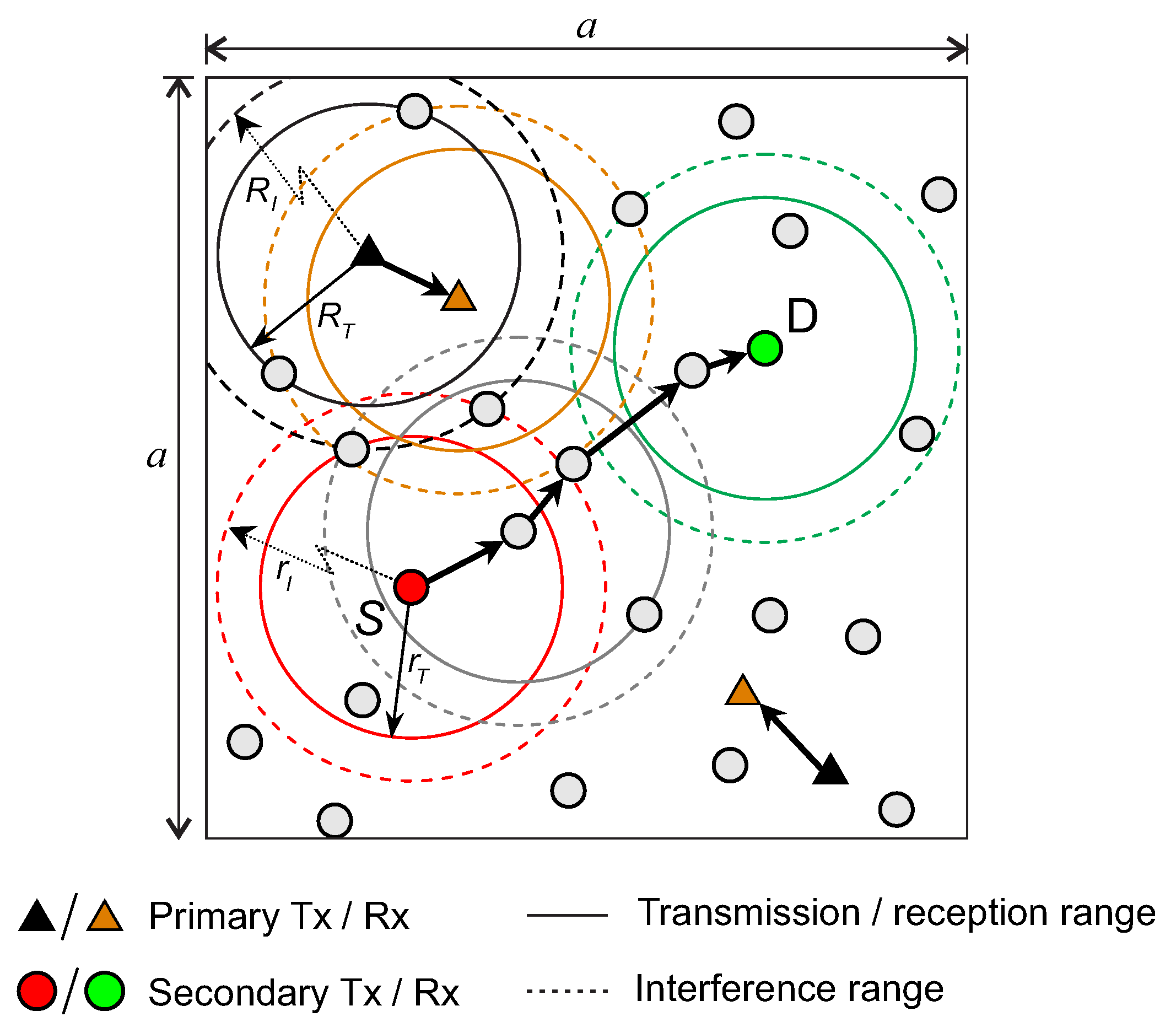
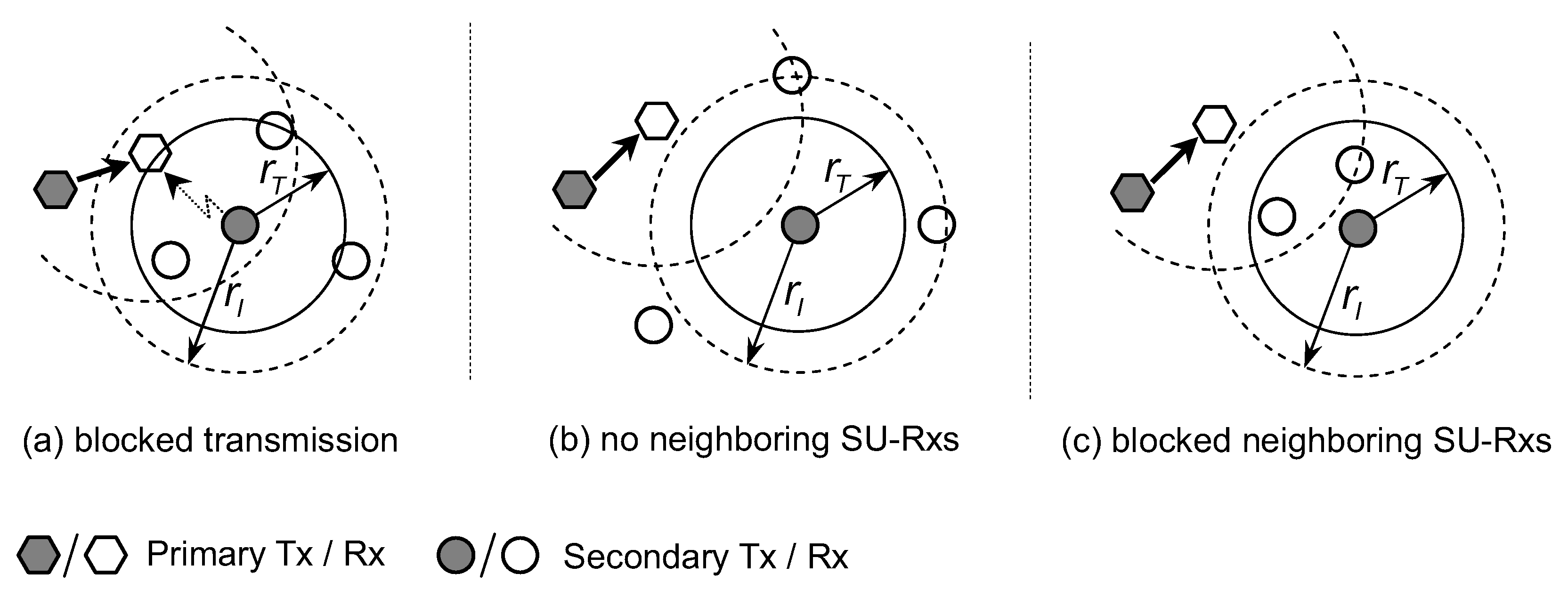
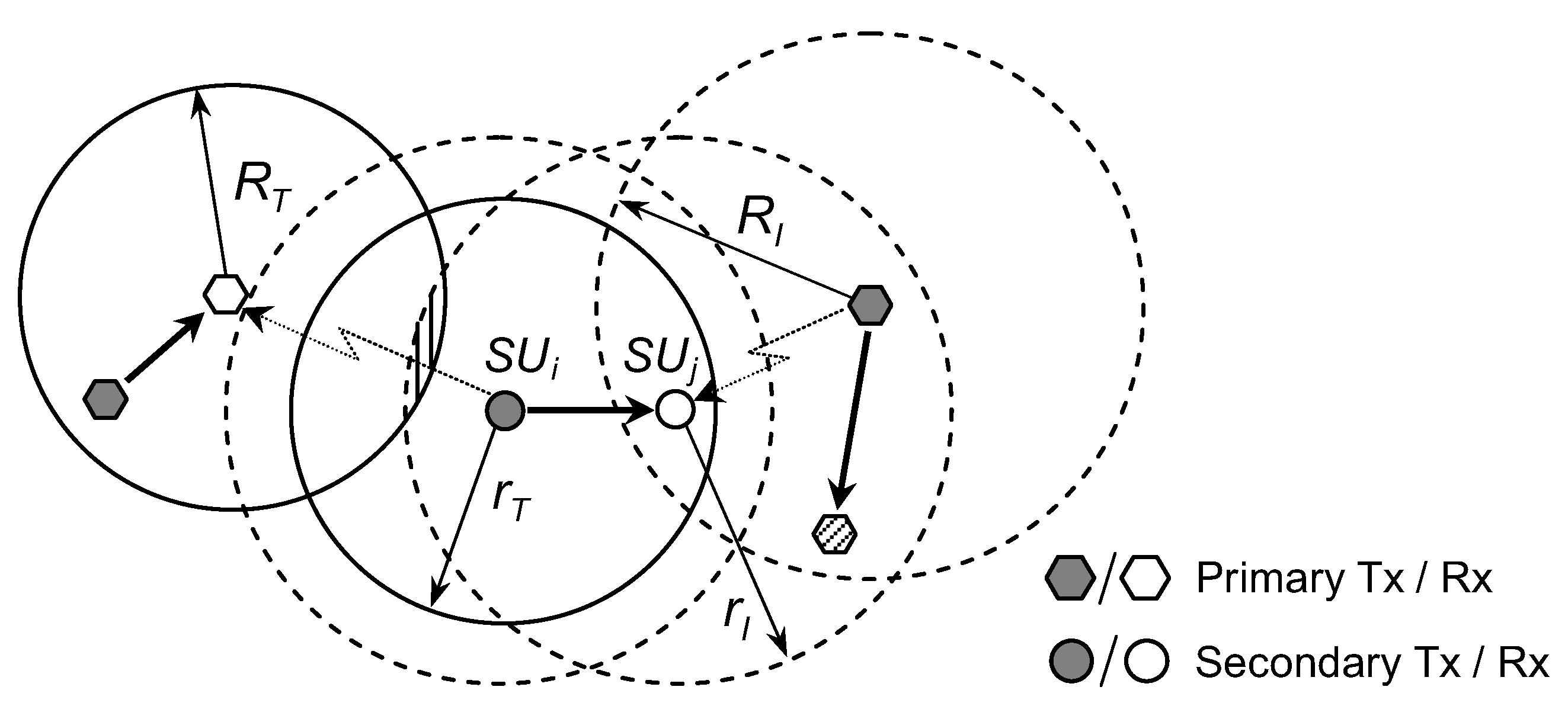

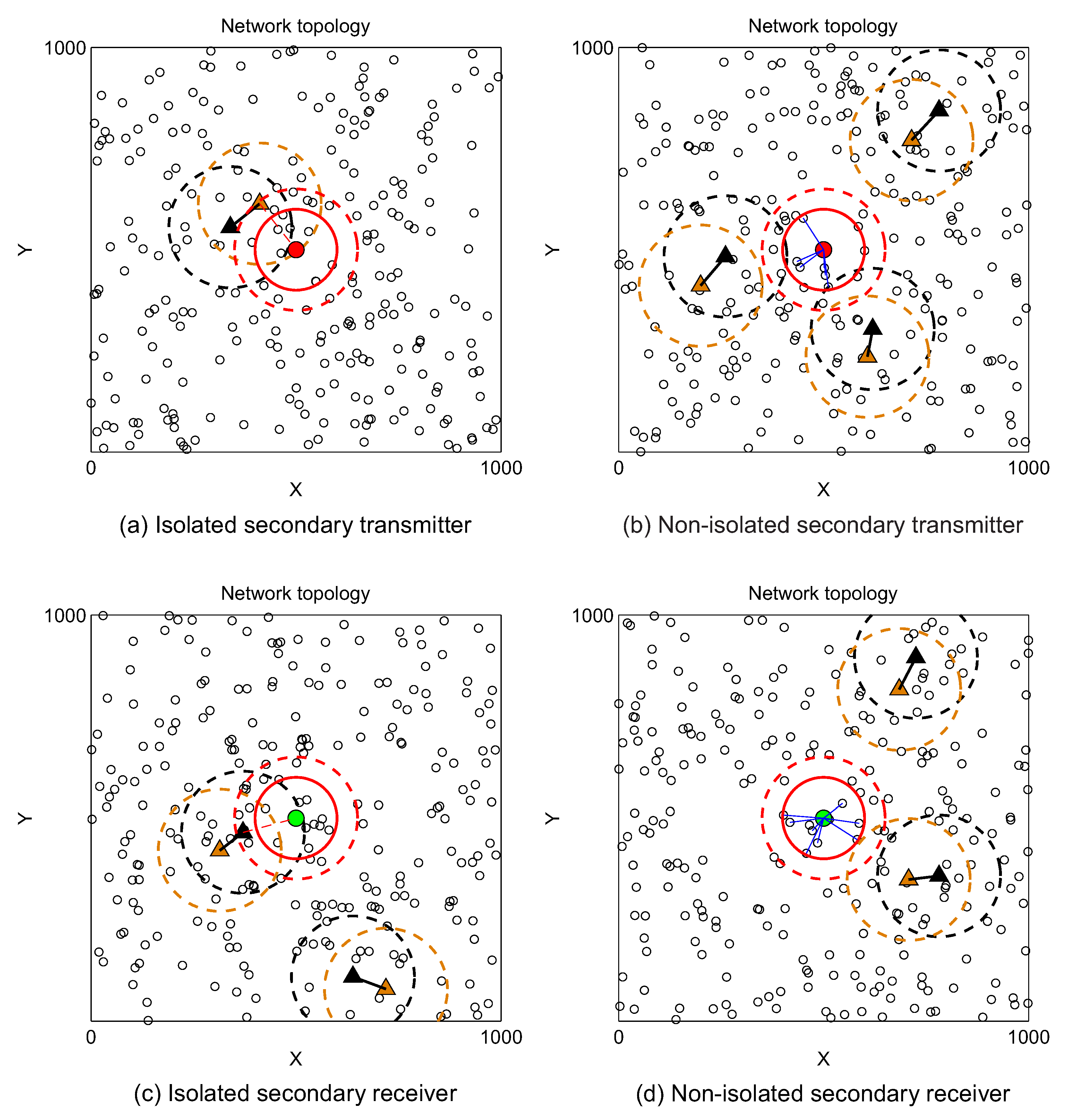
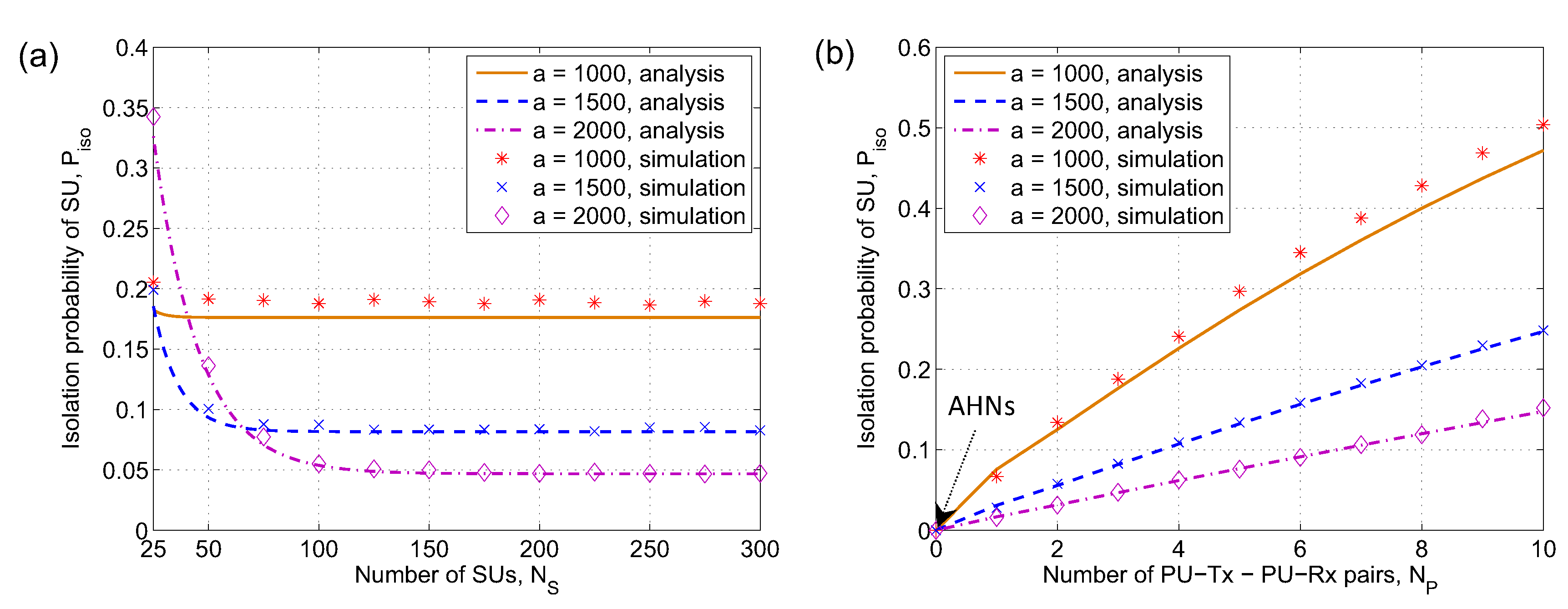

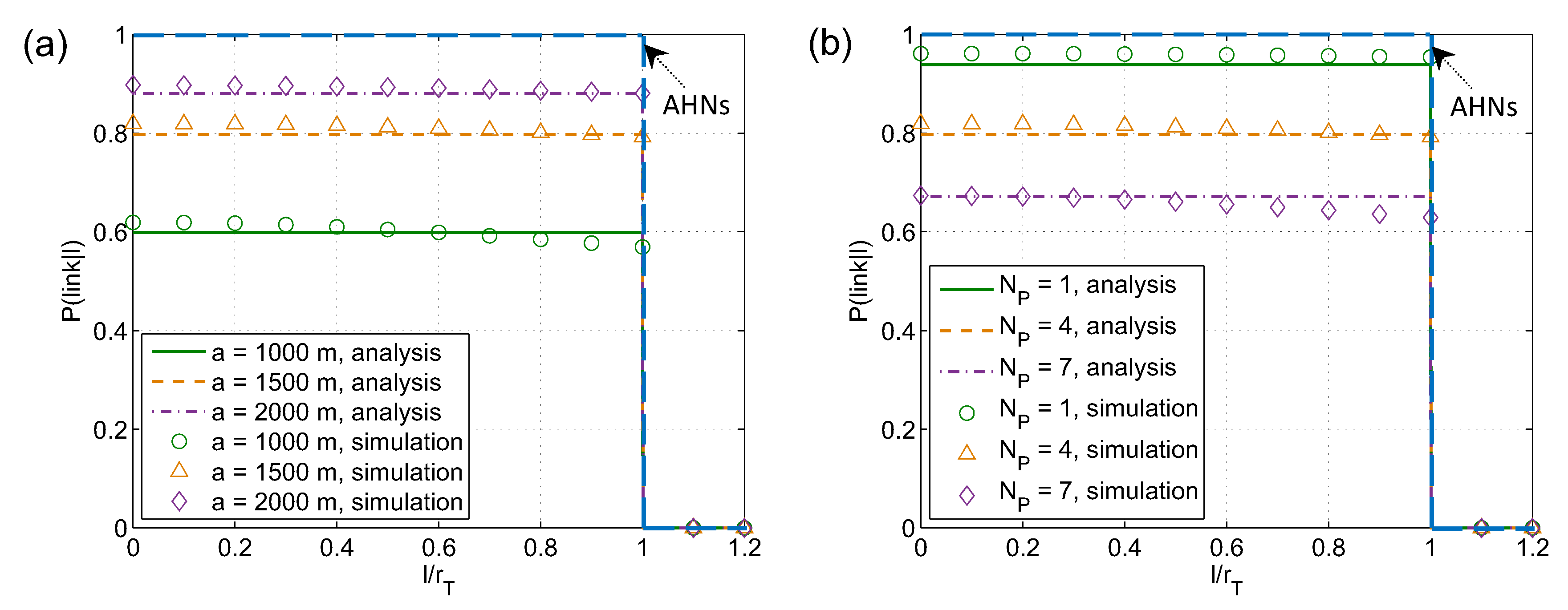

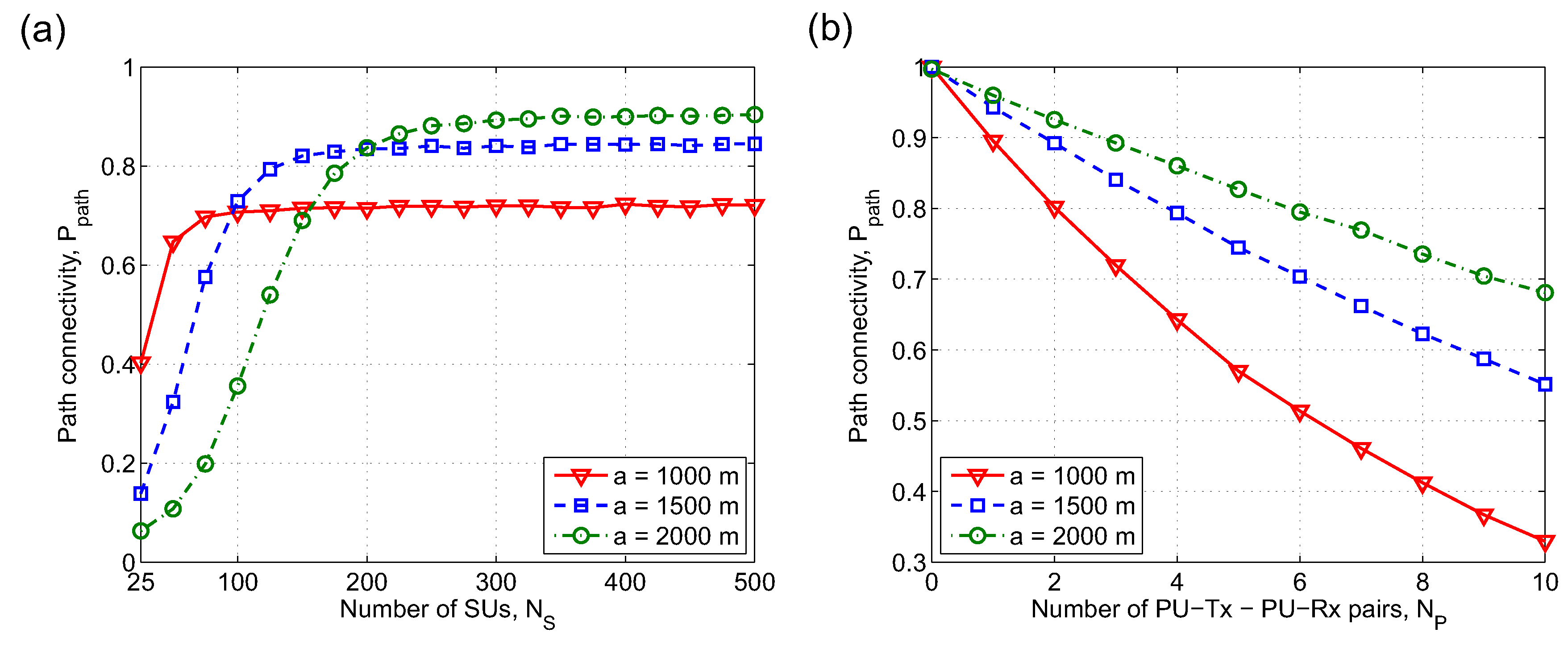
© 2019 by the authors. Licensee MDPI, Basel, Switzerland. This article is an open access article distributed under the terms and conditions of the Creative Commons Attribution (CC BY) license (http://creativecommons.org/licenses/by/4.0/).
Share and Cite
The Dung, L.; Choi, S.-G. Connectivity Analysis of Cognitive Radio Ad-Hoc Networks with Multi-Pair Primary Networks. Sensors 2019, 19, 565. https://doi.org/10.3390/s19030565
The Dung L, Choi S-G. Connectivity Analysis of Cognitive Radio Ad-Hoc Networks with Multi-Pair Primary Networks. Sensors. 2019; 19(3):565. https://doi.org/10.3390/s19030565
Chicago/Turabian StyleThe Dung, Le, and Seong-Gon Choi. 2019. "Connectivity Analysis of Cognitive Radio Ad-Hoc Networks with Multi-Pair Primary Networks" Sensors 19, no. 3: 565. https://doi.org/10.3390/s19030565




